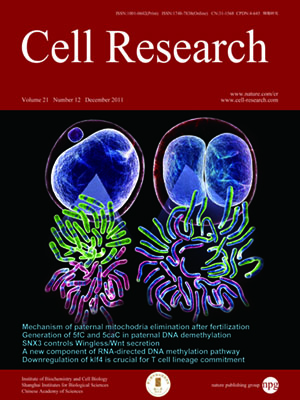
Volume 21, No 12, Dec 2011
ISSN: 1001-0602
EISSN: 1748-7838 2018
impact factor 17.848*
(Clarivate Analytics, 2019)
Volume 21 Issue 12, December 2011: 1662-1669
ORIGINAL ARTICLES
Elimination of paternal mitochondria through the lysosomal degradation pathway in C. elegans
Qinghua Zhou, Haimin Li and Ding Xue
Qinghua Zhou, Haimin Li and Ding Xue
Correspondence: Ding Xue,(ding.xue@colorado.edu)
In mammals, the inheritance of mitochondrion and its DNA (mtDNA) is strictly maternal, despite the fact that a sperm can inject up to 100 functional mitochondria into the oocyte during fertilization. The mechanisms responsible for the elimination of the paternal mitochondria remain largely unknown. We report here that this paternal mitochondrial elimination process is conserved in Caenorhabditis elegans, and that the lysosomal pathway actively participates in this process. Molecular and cell biological analyses indicate that in wild-type animals paternal mitochondria and mtDNA are destroyed within two hours after fertilization. In animals with compromised lysosomes, paternal mitochondria persist until late embryonic stages. Therefore, the lysosomal pathway plays an important role in degrading paternal mitochondria introduced into the oocyte during fertilization. Our study indicates that C. elegans is an excellent animal model for understanding and dissecting this conserved biological process critical for animal development and reproduction.
Cell Research (2011) 21:1662-1669. doi:10.1038/cr.2011.182; published online 22 November 2011
FULL TEXT | PDF
Browse 2199


